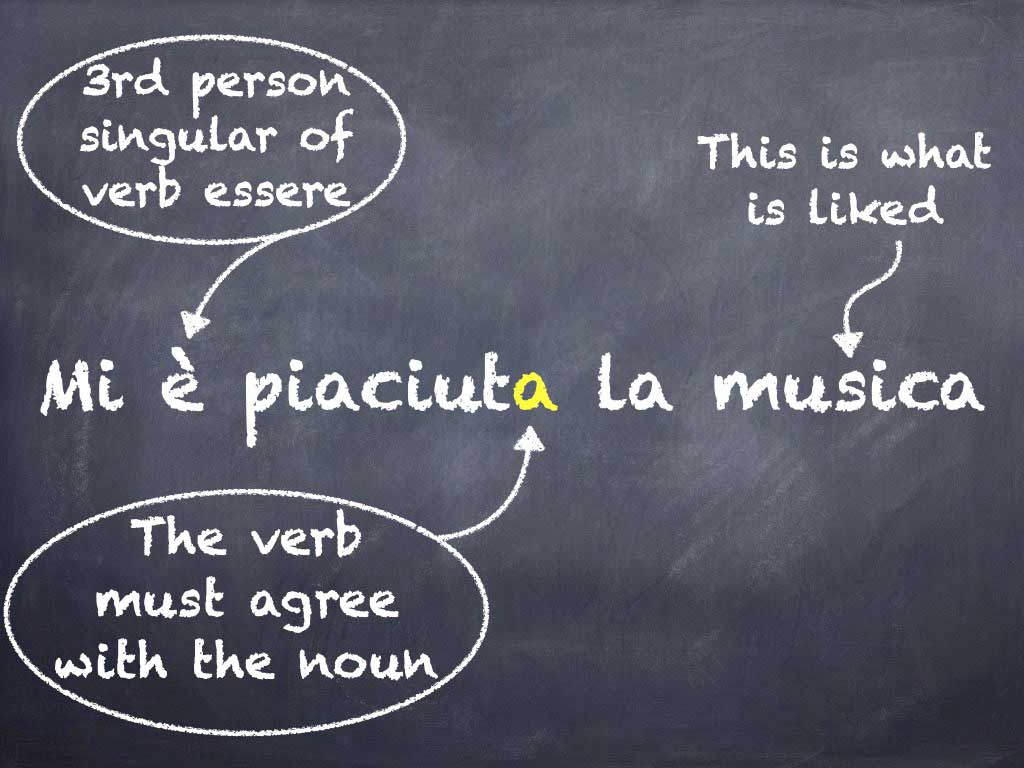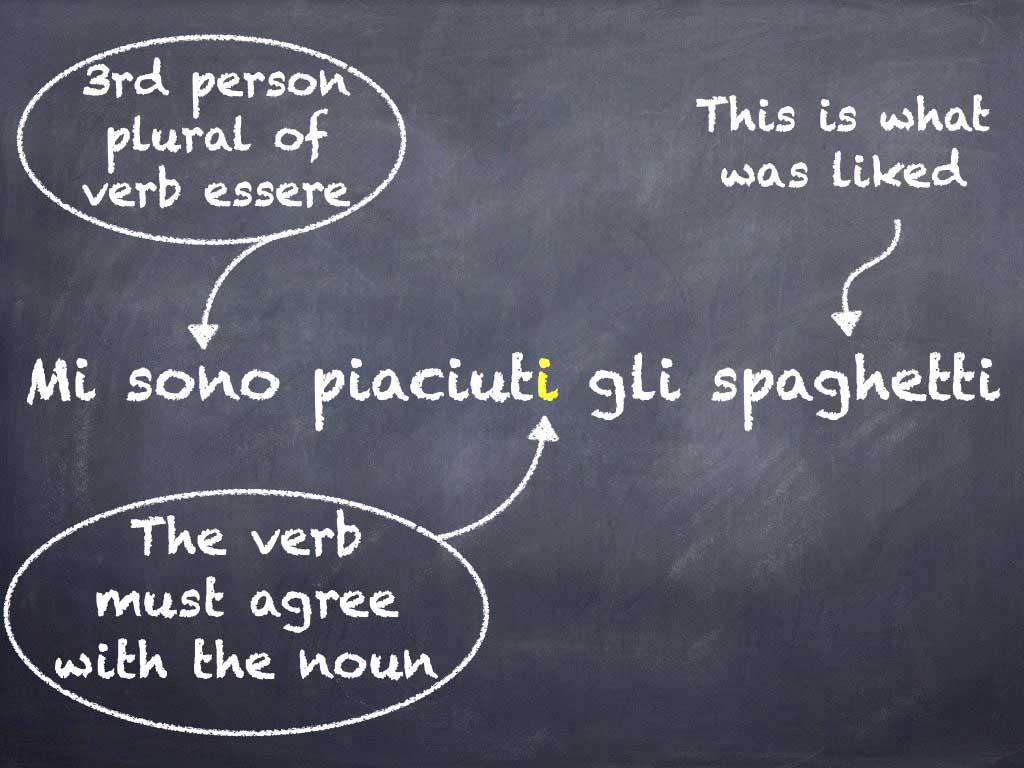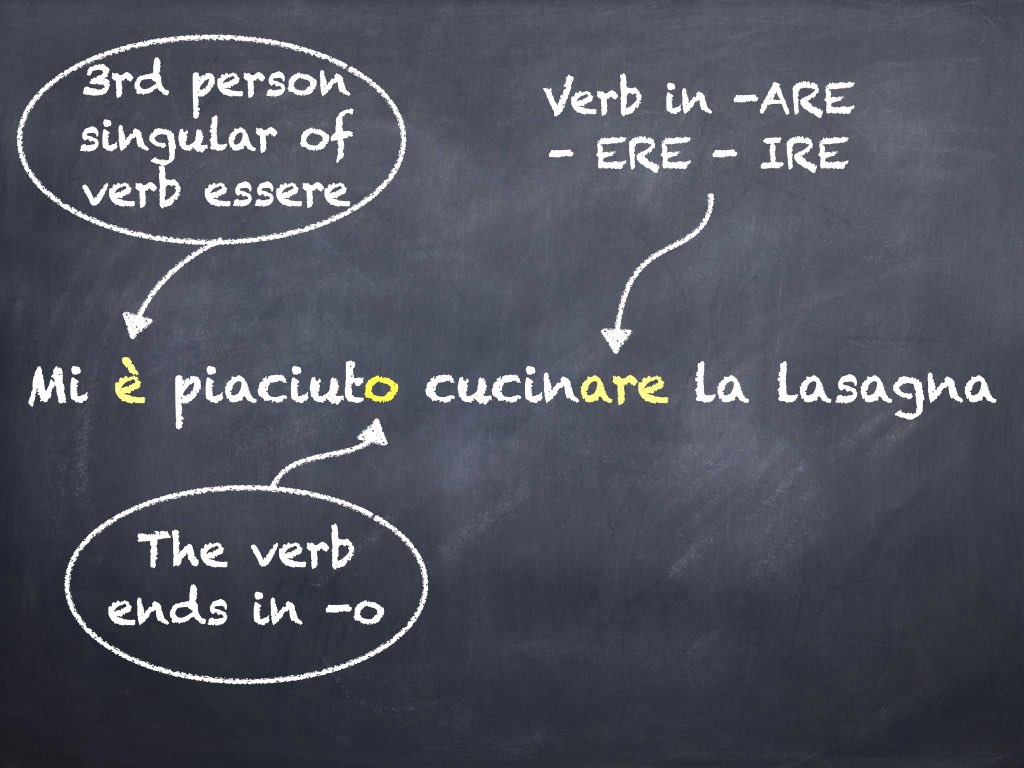The verb “piacere” has undoubtedly come up in your Italian learning. (to like). Using this verb in the past tense is a little challenging because it doesn’t have the same structure as most other verbs. You can easily use “piacere” in the past tense with a little practice, so don’t worry.
Like the verb piacere in the present tense, piacere in other tenses takes the third-person singular and plural.
Piacere is conjugated with essere in the passato prossimo, so the past participle agrees in gender and number with the subject.
Points to keep in mind:
Piacere takes essere (to be) in compound tenses.
Piaciuto must agree with what was liked, not who liked it.
In its verb forms, Piacere uses indirect object pronouns, which differ from other pronouns, such as reflexive ones. Sometimes learners get them mixed up and say “si piace,” which is incorrect, instead of “gli piace.”
PRESENT
Mi piace la musica (I like music)
PAST
Mi è piaciuta la musica (I liked the music)

PRESENT
Mi piacciono gli spaghetti. (I like spaghetti)
PAST
Mi sono piaciuti gli spaghetti (I liked spaghetti)

📌 PIACERE IN THE PAST WITH ANOTHER VERB
When the subject is an action (an infinitive verb), the auxiliary essere of piacere is in the third person singular and the past participle ends in –o.
Mi piace cucinare la lasagna (I like to cook lasagna)
Mi è piaciuto cucinare la lasagna (I liked to cook lasagna)

The auxiliary and past participles always coincide with the gender and number of the pleasant object. So, if you like a feminine noun, ensure the participle agrees with the subject.
Mi è piaciuta la pasta → I liked the pasta
Mi sono piaciute le tue scarpe → I liked your shoes
It is necessary to keep in mind that no matter what tenses you use, you must always use PIACERE in the third person singular or plural.
So there you have it – a quick guide to using “piacere” in the past tense. Remember to use “essere” in the past tense, along with the past participle “piaciuto/a/i/e,” and to make sure the past participle agrees in gender and number with the thing that was liked, not with the subject.
With a little practice, you’ll be able to easily use this tricky verb!

What’s next?
You might want to keep learning Italian online with these free resources:









Leave a Reply